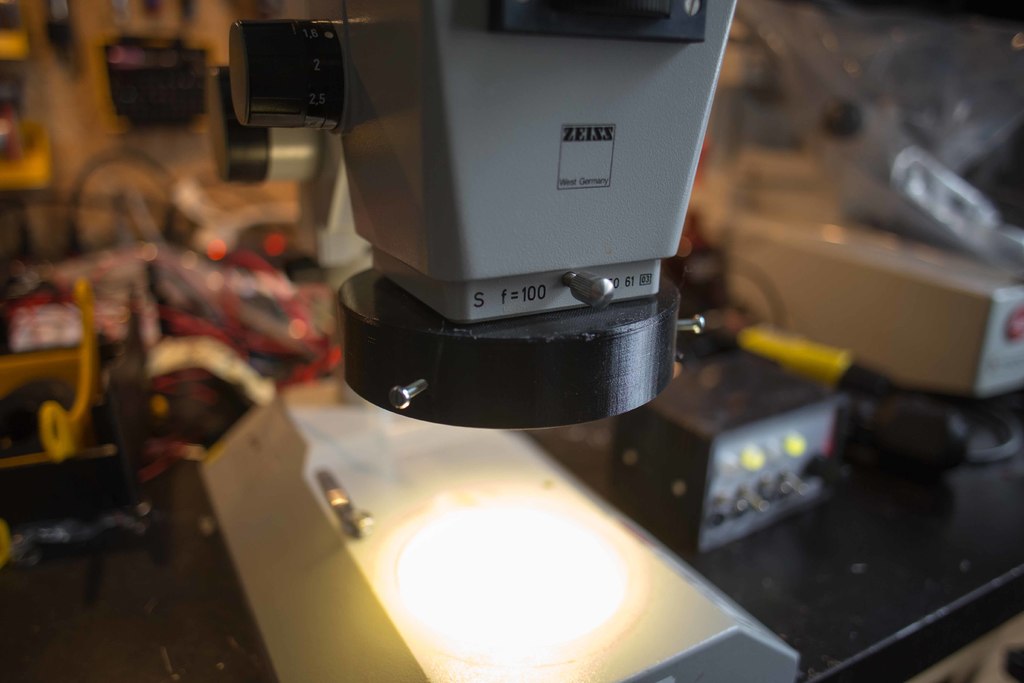
Cochrane Ringlight for microscopes
thingiverse
<b>This is a significantly reduced description of the project. All information about the construction, electronics and spectral data can be found on my website: [www.science-feles.de](https://science-feles.de/2021/04/28/microscope-ringlight/ "www.science-feles.de"). <b>Check out my other designs for the lab: [Cochrane lab designs](https://www.thingiverse.com/zefram_cochrane/collections/cochranes-lab "Cochrane lab designs"). <b>I would be very happy about a [Tip](https://www.paypal.com/donate?hosted_button_id=33A3BXW43NW42 "Tip"). I made a special housing for the electronics: https://www.thingiverse.com/thing:4842649 I designed the ring light so that it can be easily attached and adjusted with three screws. The size is as small as possible without complicating the mounting of the LED too much. The diameter is chosen so that the macroscopic view of the object is not obscured. The 5 mm LEDs are aligned in two rows and slightly offset in height. Each individual LED is aligned horizontally and vertically at an exact angle to the center of the field of view. The alignment angle is designed for a working distance (in the focal plane) of 90 mm. I have provided cable grommets to simplify soldering together. A provided cover closes the ringlight suitably. I chose the LED Opto Supply OS6MFL5A31A because of its high brightness and low price 0,23 €. With 54 LEDs installed, this means (with parallel connection) a voltage of 3.6 V, 3.24 A (11.66 W) and a luminous flux of <b>1080 lm</b>. I used a simple 5 V, 4 A (20 W) plug-in power supply from Quad Power as the voltage source and regulated the operating voltage using an XL4015 step-down converter with current limiting. Most power supplies are insufficiently stabilized and the voltage drops quickly under load (Fig 3). Therefore, when buying a power supply, make sure that it has a sufficient power reserve. The XL4015 step-down converter is described with a maximum current of 5 A. This is possible, but requires appropriate cooling! For dimming the LEDs I installed a simple 5 A PWM module in front of the step-down converter. The control range is between 1 and 100 % at a frequency of 10 kHz. This allows flicker-free operation. I have wired the LEDs in such a way that they can be <b>switched to four quadrants, each individually but all together dimmed</b>. This allows a one-sided and oblique illumination of the sample to be able to improve the contrast by targeted shadow casting. > --------------------------------------------------------- > Ceterum censeo martem esse abeundum.
With this file you will be able to print Cochrane Ringlight for microscopes with your 3D printer. Click on the button and save the file on your computer to work, edit or customize your design. You can also find more 3D designs for printers on Cochrane Ringlight for microscopes.
